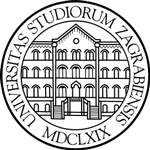The behaviour and removal of synthetic printing dyes from wastewaters
Abstract
One of the problems in the graphic industry is the discharge of untreated colored effluents into recipients. Printing dyes are classified as poorly biodegradable with a tendency to exhibit negative effects for the environment. Not enough is known about the interactions of these dyes with other pollutants, as well as about the effects of interactions and their impact on wastewater treatments. The applied wastewater conventional treatments are accompanied by shortcomings (the incomplete dye degradation, large amount of coagulants used, the regeneration of materials, the high cost of waste disposal, etc.) which causes a reduced efficiency of applied processes. In the last few years, studies are based on the application of improved oxidation processes, as a technique that is a prominent among treatments for reducing organic pollutants concentration. The advantages of these processes are the generation of hydroxyl radicals, powerful oxidizing species, with a tendency to degrade poorly biodegradable compounds.

This work is licensed under a Creative Commons Attribution-NonCommercial-NoDerivatives 4.0 International License.






